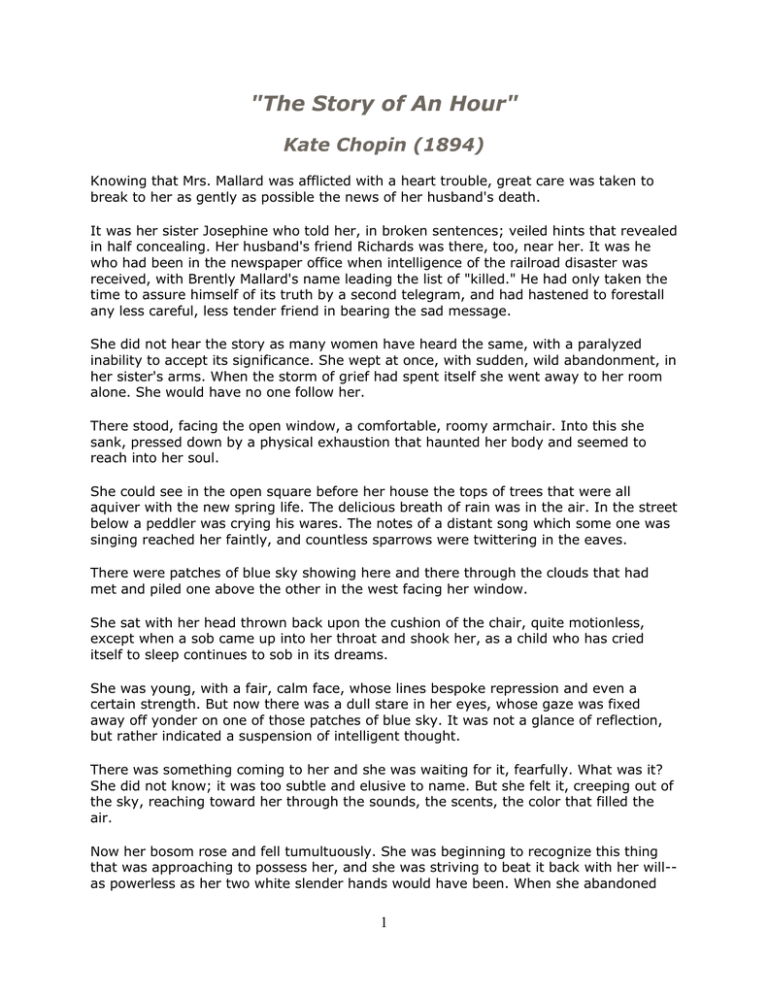
"The Story of An Hour" Kate Chopin (1894)
"The Story of an Hour" was published in 1894 and, along with "The Storm" (1898), is among Chopin's most famous stories. Although Chopin's female protagonists act in unconventional, even scandalous, ways, readers accepted this as simply part of the storytelling and didn't suspect Chopin of moralizing or trying to insert her.
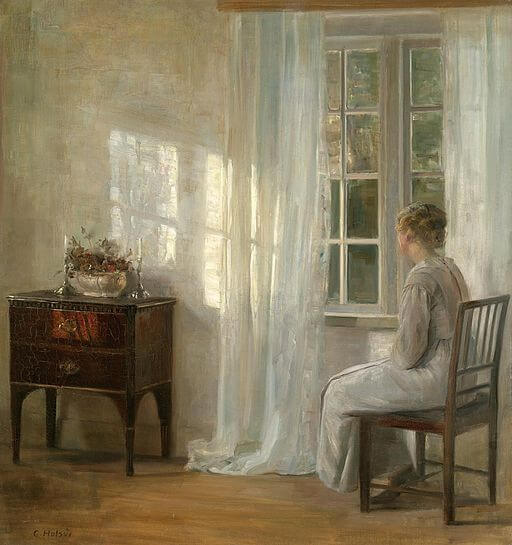
一小时的故事The Story of An Hour by Kate Chopin英汉双语橙叶博客
The action of "The Story of an Hour" is simple: Mrs. Mallard, who suffers from "a heart trouble," is informed about her husband's demise in a train accident. At first she is beset by grief, but.

The Story of an Hour by Kate Chopin Audiobook
Updated on May 24, 2019. "The Story of an Hour" by American author Kate Chopin is a mainstay of feminist literary study. Originally published in 1894, the story documents the complicated reaction of Louise Mallard upon learning of her husband's death. It is difficult to discuss "The Story of an Hour" without addressing the ironic ending.
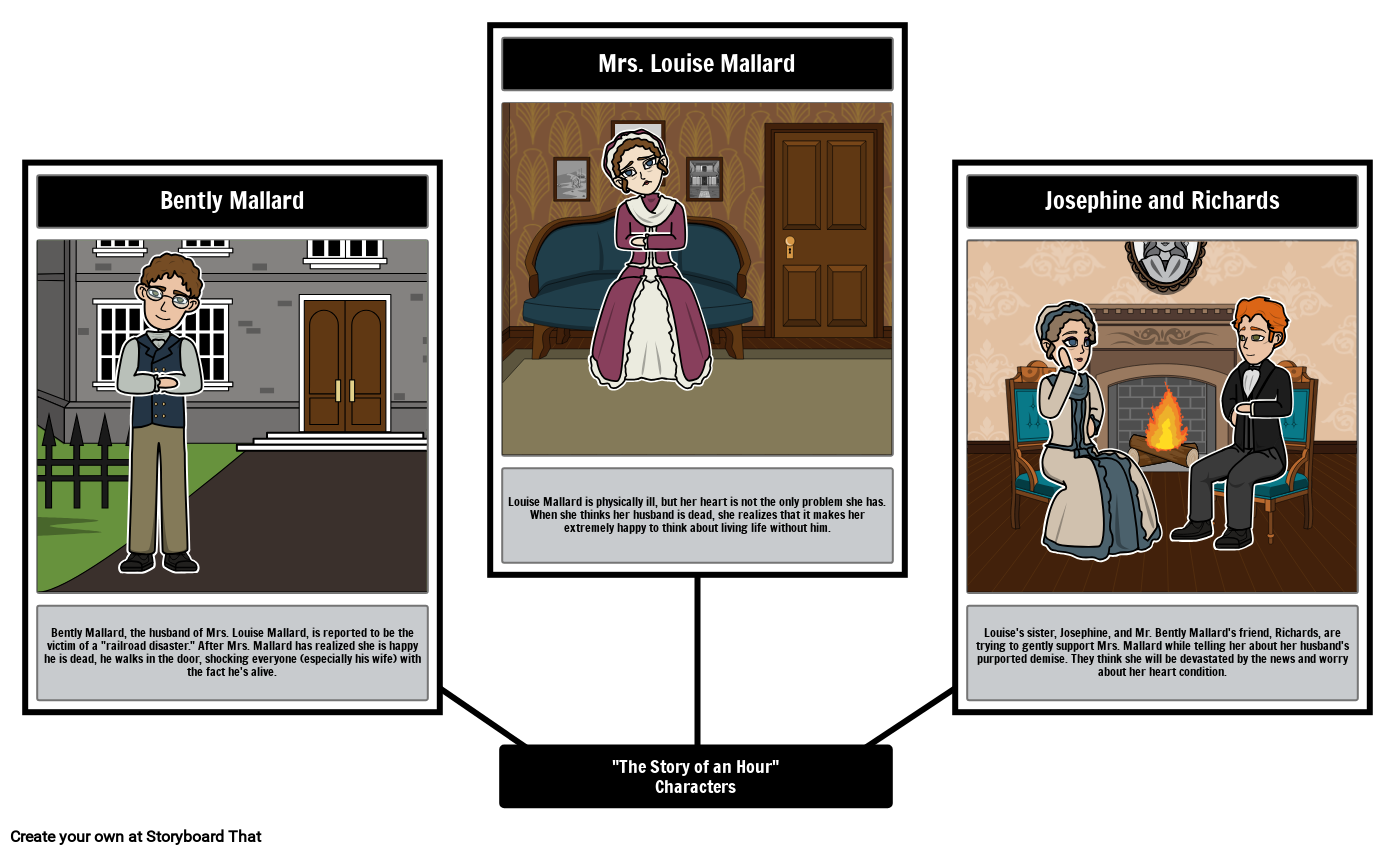
The Story of an Hour by Kate Chopin The Story of an Hour Summary & Analysis
This article includes a summary, as well as a look at themes, symbolism and irony. Summary of "The Story of an Hour". Mrs. Mallard, who has heart trouble, is gently given the news that her husband has been killed in a train accident. Her husband's friend Richards found out at the newspaper office, confirmed the name, and went to her sister.
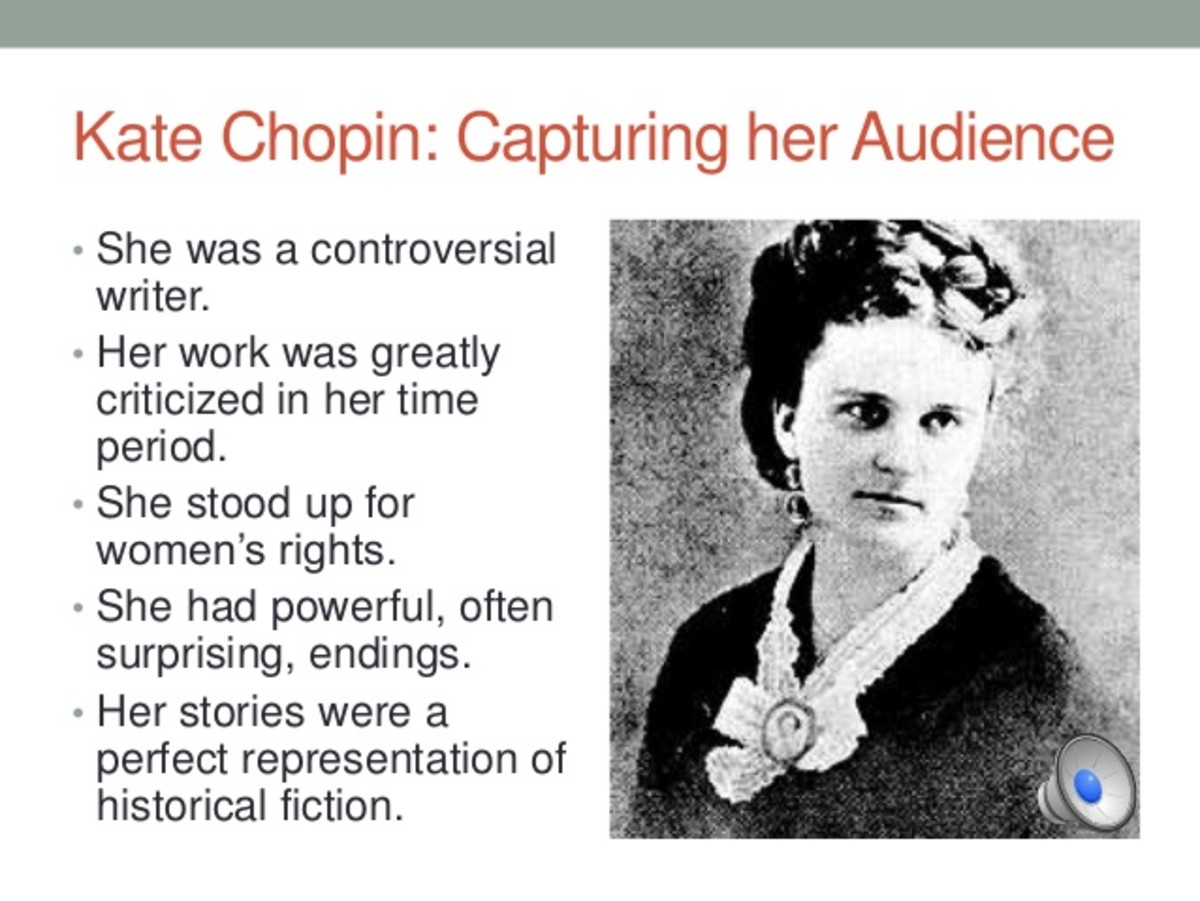
A Feminist Reading of Kate Chopin's "The Story of an Hour" Owlcation
The Story of an Hour Summary. Louise Mallard has a weak heart that puts her at risk if she becomes too animated. After hearing from Richards —a friend of the family—that Louise's husband Brently Mallard has died in a train accident, her sister Josephine takes great care to break the news to Louise in a gentle, measured way.
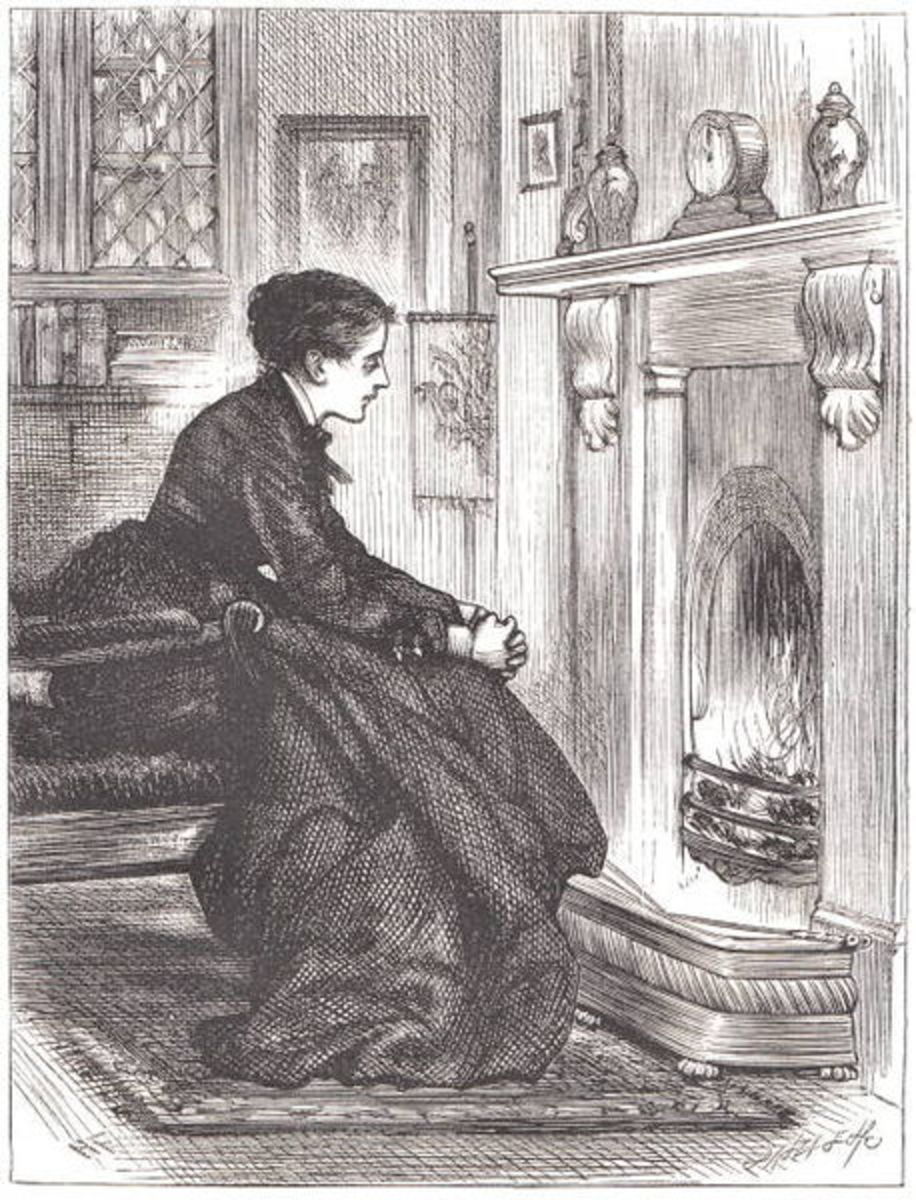
The Love and Joy That Kill Kate Chopin's "The Story of an Hour" Owlcation
Josephine screams, and Richards tries unsuccessfully to block Louise from seeing him. Doctors arrive and pronounce that Louise died of a heart attack brought on by happiness. A short summary of Kate Chopin's The Story of an Hour. This free synopsis covers all the crucial plot points of The Story of an Hour.
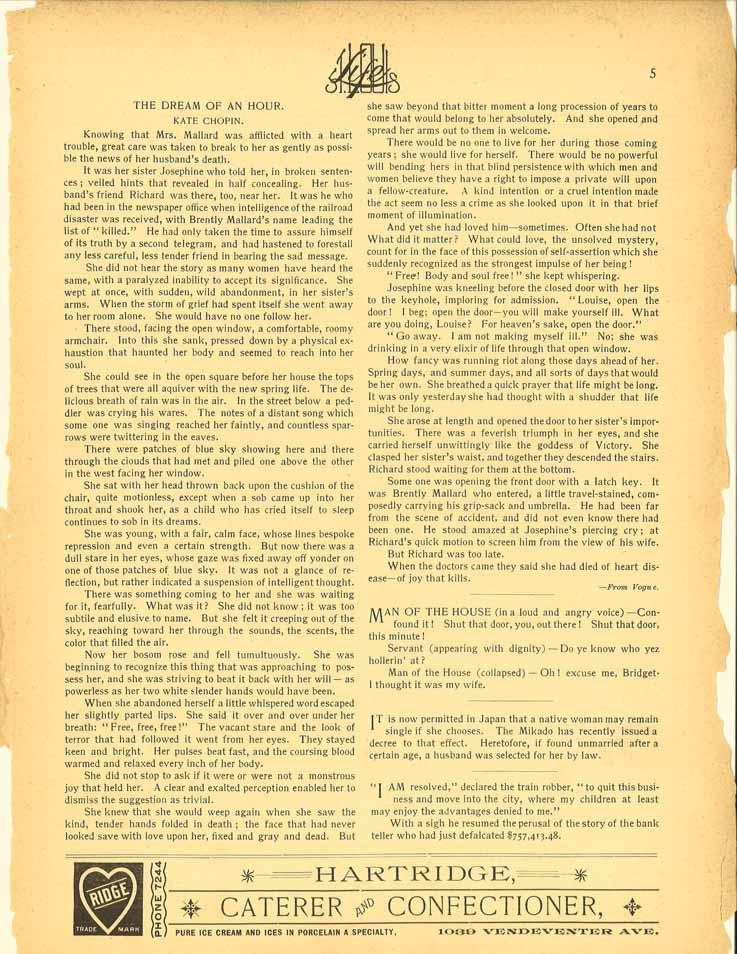
The Story of an Hour, Kate Chopin, characters, setting
In 1984, PBS aired a film adaptation of "The Story of an Hour.". The film was called "The Joy that Kills," taken from the story's last line, and was written by Tina Rathborne and Nancy Dyer. The best study guide to The Story of an Hour on the planet, from the creators of SparkNotes. Get the summaries, analysis, and quotes you need.

PPT The Story of an Hour Kate Chopin PowerPoint Presentation, free download ID2967472
After her initial sobs of grief subside, Louise escapes into her bedroom and locks the door. She refuses to let Josephine or Richards follow her. Alone, she falls into a chair placed before an open window. Absolutely drained by her own anguish and haunted by exhaustion, she rests in the chair and looks out the window.

Part I Lecture on Kate Chopin's "The Story of an Hour" YouTube
Kate Chopin wrote "The Story of an Hour" on April 19, 1894. It was first published in Vogue (the same magazine that is sold today) on December 6, 1894, under the title "The Dream of an Hour." It was reprinted in St. Louis Life on January 5, 1895. You can find extensive, accurate information about Kate Chopin's stories and novels as well as.

Analysis of "The Story of an Hour" by Kate Chopin Owlcation
Originally entitled "The Dream of an Hour" when it was first published in Vogue (December 1894), "The Story of an Hour" has since become one of Kate Chopin's most frequently anthologized stories. Among her shortest and most daring works, "Story" examines issues of feminism, namely, a woman's dissatisfaction in a conventional marriage and her desire…

The Joy That Kills Kate Chopin's "The Story of an Hour" Owlcation
Full Plot Analysis. As the brief nature of the story suggests, "The Story of an Hour" explores the sudden struggle that Louise Mallard faces as she reaches a major turning point in her life. The possibilities that exist in a world without her husband captivate her, but she also experiences guilt regarding the relief she feels after hearing.
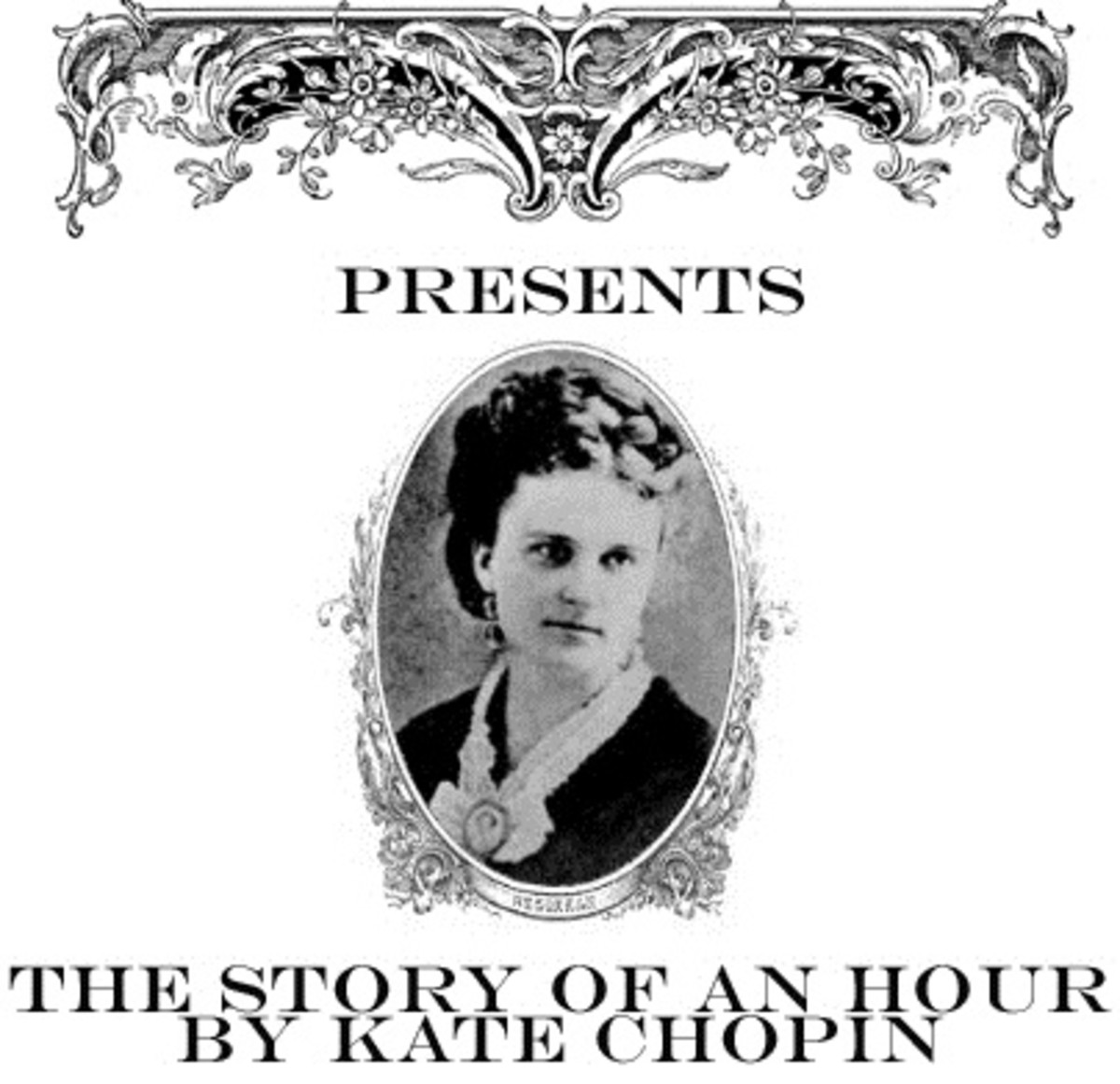
💌 Chopin story of an hour full text. Analysis of "The Story of an Hour" by Kate Chopin. 20221011
Yet Chopin's short story is, upon closer inspection, a subtle, studied analysis of death, marriage, and personal wishes. Written in April 1894 and originally published in Vogue in December of that year, the story focuses on an hour in the life of a married woman who has just learnt that her husband has apparently died.

The Story of an Hour summary Kate Chopin Character analysis In depth story analysis YouTube
Kate Chopin wrote "The Story of an Hour" on April 19, 1894. It was first published in Vogue (the same magazine that is sold today) on December 6, 1894, under the title "The Dream of an Hour.". It was reprinted in St. Louis Life on January 5, 1895, with two changes that are included in this version of the story.

PPT “The Story of an Hour” by Kate Chopin PowerPoint Presentation ID6389902
Teach The Story of An Hour, with ideas from this resource guide, including discussion questions, character analysis, literary devices, themes, etymology, and historical context of Chopin's iconic work and the emergence of the modern feminist literary movement. Our goal is to help you help your students to better understand AND ENJOY classic literature!

A Feminist Reading of Kate Chopin's "The Story of an Hour" Owlcation
Vogue [1] " The Story of an Hour " is a short story written by Kate Chopin on April 19, 1894. It was originally published in Vogue on December 6, 1894, as " The Dream of an Hour ". It was later reprinted in St. Louis Life on January 5, 1895, as "The Story of an Hour". The title of the short story refers to the time elapsed between the moments.

The Story Of An Hour by Kate Chopin. audiobook YouTube
Analyzing Chopin's "The Story of an Hour" takes time and careful thought despite the shortness of the story. The story is open to multiple interpretations and has a lot to reveal about women in the 1890s, and many of the story's themes, characters, and symbols critique women's marriage roles during the period.
- Spanisch Futur Ir A Infinitiv
- دانلود فیلم ملاقات خصوصی کامل
- Was Heißt Airbnb Auf Deutsch
- 2 Euro Münzen Berlin 2018 Wert
- Trailer Für Tatort Borowski Und Das Unschuldige Kind Von Wacken
- I Just Called To Say I Love You Deutsch
- Wie Alt Ist Marianne Koch
- Assistenz Der Geschäftsführung Andere Bezeichnung
- Pullover Aus 2 Rechtecken Stricken
- Ist P1 In Deutschland Erlaubt